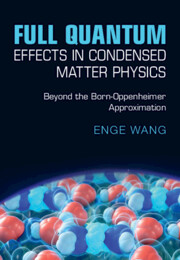Refine search
Actions for selected content:
3387661 results

The Cambridge Urban History of Europe
- Coming soon
-
- Expected online publication date:
- January 2026
- Print publication:
- 20 November 2025
-
- Book
- Export citation

The Cambridge Urban History of Europe
- Coming soon
-
- Expected online publication date:
- January 2026
- Print publication:
- 20 November 2025
-
- Book
- Export citation

The Cambridge History of the American Revolution
- Coming soon
-
- Expected online publication date:
- January 2026
- Print publication:
- 30 October 2025
-
- Book
- Export citation

The Cambridge History of the American Revolution
- Coming soon
-
- Expected online publication date:
- January 2026
- Print publication:
- 30 October 2025
-
- Book
- Export citation

Theatre as Technology
- Apparatus, Nostalgia, Obsolescence
- Coming soon
-
- Expected online publication date:
- January 2026
- Print publication:
- 31 January 2026
-
- Book
- Export citation

Slavery, Freedom, and Development
- How Africa Became the Mirror Image of Europe
- Coming soon
-
- Expected online publication date:
- January 2026
- Print publication:
- 31 January 2026
-
- Book
- Export citation

Full Quantum Effects in Condensed Matter Physics
- Beyond the Born-Oppenheimer Approximation
- Coming soon
-
- Expected online publication date:
- January 2026
- Print publication:
- 31 January 2026
-
- Book
- Export citation
Materials Management
- Coming soon
-
- Expected online publication date:
- December 2025
- Print publication:
- 01 April 2027
-
- Textbook
- Export citation

John Dewey's Human Nature and Conduct
- A Centennial Handbook
- Coming soon
-
- Expected online publication date:
- December 2025
- Print publication:
- 31 December 2025
-
- Book
- Export citation

Judaism and the Philosophy of Religion
- Coming soon
-
- Expected online publication date:
- December 2025
- Print publication:
- 31 December 2025
-
- Book
- Export citation

Homesick Nation
- Development, Migration and Yearning in Rural China
- Coming soon
-
- Expected online publication date:
- December 2025
- Print publication:
- 31 December 2025
-
- Book
- Export citation
Advances in Material Science and Applications
- Bulk (Silicon) vs Nano (Graphene)
- Coming soon
-
- Expected online publication date:
- December 2025
- Print publication:
- 01 April 2027
-
- Book
- Export citation
Elementary Cartesian Tensors
- With Application to Engineering Problems
- Coming soon
-
- Expected online publication date:
- December 2025
- Print publication:
- 01 April 2027
-
- Textbook
- Export citation

Cases in Simulated Disaster Medicine
- Coming soon
-
- Expected online publication date:
- December 2025
- Print publication:
- 31 December 2025
-
- Book
- Export citation
Lawmaking under Authoritarianism
- Factions, Institutions, and Outcomes Across Dictatorships
- Coming soon
-
- Expected online publication date:
- December 2025
- Print publication:
- 31 December 2025
-
- Book
- Export citation

After Impressionism
- Poetry and Painting, 1874-1914
- Coming soon
-
- Expected online publication date:
- December 2025
- Print publication:
- 31 December 2025
-
- Book
- Export citation

The Cambridge Companion to British Utopian Literature and Culture since 1945
- Coming soon
-
- Expected online publication date:
- December 2025
- Print publication:
- 31 December 2025
-
- Book
- Export citation

God and Truth
- An Essay on Reason and Religious Ideas
- Coming soon
-
- Expected online publication date:
- December 2025
- Print publication:
- 30 November 2025
-
- Book
- Export citation

Public Preferences, Gender, and Foreign Support for Armed Movements
- Coming soon
-
- Expected online publication date:
- December 2025
- Print publication:
- 31 December 2025
-
- Element
- Export citation

Chinese Feminisms and The Vagina Monologues
- Coming soon
-
- Expected online publication date:
- December 2025
- Print publication:
- 31 December 2025
-
- Element
- Export citation
